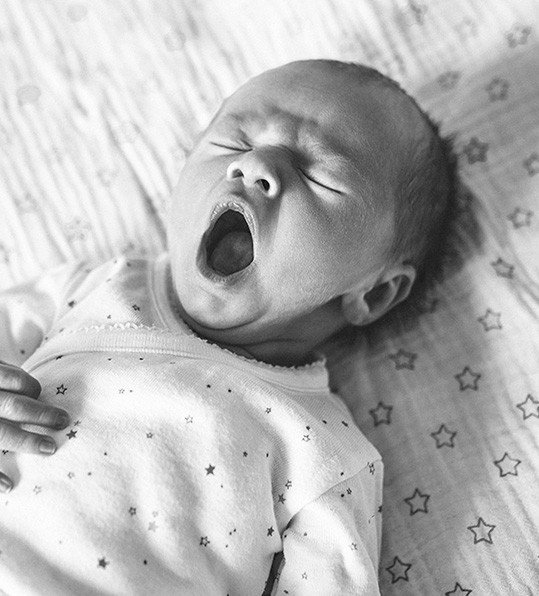Going Out to Dinner with Kids While on a Sleep Schedule
Tell Tale Signs of A Tired Child
When it comes to the signs of a tired child it can vary based on age. For babies, these signs maybe ear pulling, yawning, eye rubbing, crying, or even staring off into the distance. For toddlers and older children, the signs of tiredness are often behavioral. Mood swings, emotional reactivity, or hyperactivity, may not only be signs of a tired kiddo, but also signs that a child has missed sleep.
There is an art of knowing the signs that precede the meltdown. You just have to watch for tired signs to clue you in that they are getting sleepy, but not yet wholly exhausted. If you can pick up on those, you’re golden because you can help your child get the rest they need before they fall apart and are too tired to sleep well.

How To Tell Your Child Needs Sleep
There are two ways to determine when to get your child ready for sleep. First, watch the clock. Second, watch your child.
Ideally you’ll be able to get your little one down for a nap or bedtime before there are overt signs of fatigue like the ones mentioned above. If you miss that window you can at least pick up on cues that signal a need for sleep and help them get there before the tears and tantrums commence.
When sleep was offered after the point of fatigue, parents may see crying at the onset of sleep. If a child goes to bed too late this can also result in early morning wakings.
Covert Signs of a Tired Baby & Toddler
It’s easy to miss some sleep signs. This is where it pays to be observant!
For babies, we mentioned eye rubbing, but that can also be face rubbing. In addition to ear pulling, another unusual sign of tiredness is nose scrunching. These signs can easily be overlooked. Over time you will start to notice that they occur around the time your child is ready for sleep. This is your baby’s way to signal their need for some rest.
For toddlers, we mentioned emotional reactivity, but so is going from snuggling to playing or from laying to cuddling. Not being able to be content in a position or activity is a sign of exhaustion. This point of restlessness is going to make it hard for your sweet little one to settle for sleep. Ideally you’ll get them in bed before this behavior starts up. However, if it’s too late for that, then it’s time to make bedtime happen sooner rather than later.
How To Beat The Sleep Signs

Often a parent will wait for their baby to start yawning, and then the nap ends up being short, or starts with a lot of crying. For toddlers that seem hyperactive at bedtime – parents may not think their child is ready for bed. Missing the ideal time for sleep can result in difficulty falling asleep and waking too early. Here, it is important to understand the ideal average wake time for your child’s age. Then, watch that clock!
For instance, a 3-month old will need to go down for a nap about an hour and a half after waking. A young toddler may need a nap 5 hours later. Here is the key – they need sleep at this time even if you’re not seeing sleep cues. Get your child ready for sleep about 15 minutes or so before that ideal nap time, and you may notice that they fall asleep quickly and peacefully.
Keep in mind that having a nap on the go or an especially overstimulating awake time may cause fatigue. If this is the case, we recommend bumping the next scheduled sleep up by 30 minutes. If your child doesn’t seem tired before nap or bedtime, that means you’re doing a great job of making sure they are getting enough rest! You really don’t want your child to get to the point when they seem tired; that’s the whole idea.


